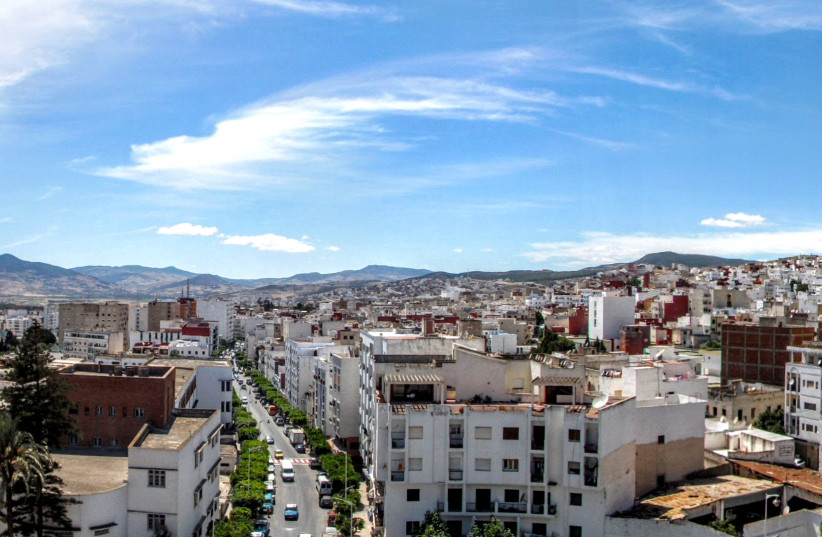After being lost for over six decades, the tombs of three celebrated 17th and 18th-century rabbis - Jacob Ben Malca, Hasday Almosino and Jacob Marrache - were rediscovered in the northern Moroccan town of Tétouan, sparking a renewed enthusiasm to excavate the over 500-year-old Jewish cemetery, Morocco's largest, according to a report by Jewish News Syndicate (JNS).
Tétouan, a United Nations Education, Scientific, and Cultural Organization (UNESCO) World Heritage site, is home to this historic Jewish cemetery. The rediscovery of these graves has ignited fresh momentum for a campaign helmed by the London-based, Sephardi genealogy nonprofit Adafina.
"These were certainly esteemed men," Jacob Marrache, chair of Adafina, pointing out their teachings continue to inspire generations of scholars and students to JNS.
Ben Malca, a scholar and revered religious judge, relocated to Tétouan from Fez in 1734 to preside over the religious court.
Almosnino, a native of Tétouan, was a respected arbiter of Jewish law with numerous published works. The Marrache tomb discovered is that of an ancestor of Jacob Marrache, a Kabbalist known for his exceptional commentary on the Zohar, the foundational Kabbalistic text.

"His commentary on the Zohar earned him fame, and his teachings inspired a generation of devoted students whose thoughts remain influential today," Marrache said when speaking of his ancestor.
"My family left Morocco for Gibraltar in 1758, but like many Jewish families, we kept close contact with Tétouan for many generations, as different communities would look to one another for halachic guidance," Marrache said.
"We even call Tétouan 'Pepquena Jerusalen' [Little Jerusalem] because of its former significance as a center of Sephardic life," Alberto Hayon, the Tétouan community's president, told JNS.
Morocco's Cementerio de Castilla cemetery to be restored
With an aim to restore Tétouan's Jewish cemetery, named Cementerio de Castilla after Jews exiled from Spain in 1492, Marrache and Andrew Strum, his distant cousin and an Australian judge, have raised over $3,000 of their nearly $11,000 goal.
Morocco's Jewish community, dating back to antiquity, saw a dramatic decline in its population from 270,000 in 1948 to an estimated 2,300 in 2015, due to emigration and travel restrictions.
"The tradition was that if somebody was married and had children, they wouldn't put a name on the grave because it was the duty of their descendants to teach the next generations where ancestors were buried and to return there on the date of their death," Marrache explained.
Many of the tombstones in the cemetery had things like the Star of David or Trees of Life on them, including tombstones of the rabbis buried there."The six-pointed star probably did not have the same meaning as today's Magen David star, which only became a major Jewish symbol in the Habsburg Empire," Marrache explained. "A lot of the tombs also have the Tree of Life on them."
In 1956, Morocco gained sovereignty from France, putting a halt to Jewish emigration and international travel. Once these restrictions were lifted in 1963, over 100,000 Moroccan Jews migrated, predominantly to Israel.
As the population declined progressively, awareness of the whereabouts of the tombs of the three venerated rabbis seemed to fade away.
"My seventh cousin Andrew Strum heard of this firsthand from relatives in the 1980s who had left Tétouan for Israel in the 1960s," Marrache told JNS. "For years, my family members have wanted to find the tomb of Rabbi Jacob Marrache, and in early 2000, we sent someone to check in Tétouan, but there was no one who could find it."
The rediscovery of the tombs is a significant achievement given that many of the tombstones lack inscriptions, adding to the difficulty of tracing Jewish ancestry in Morocco.
This momentous discovery was facilitated by Rabbi Joseph Israel, a Tétouan native currently residing in Casablanca. He recalled a tradition of the community praying at these tombs on the eve of significant Jewish holidays and led a team to the tombs during a visit on Purim this year.
Though Tétouan's Jewish history often takes a back seat to larger metropolitan areas such as Casablanca, Marrache hopes that the Abraham Accords and the recent discoveries will attract more visitors and scholars to explore this historic site.
"We are very grateful that Morocco now has a much-improved relationship with its remaining Jewish community, and since normalization with Israel, more of us are able to come back and visit our synagogues and our cemeteries," Marrache said. "The difference in opportunity in neighboring Algeria and Libya is quite tragic."
Marrache and other people have worked to restore most of the graves and are planning to start cleaning off the vegetation growth around the tombstones and clearing the walkways. around the 16th-century tombs.
"We are also keen to identify more of these tombs, whether or not they can be linked to surviving family lines," he said.
